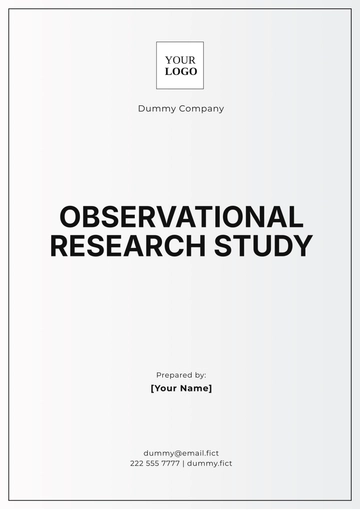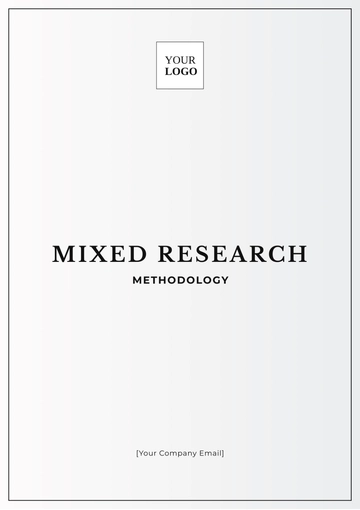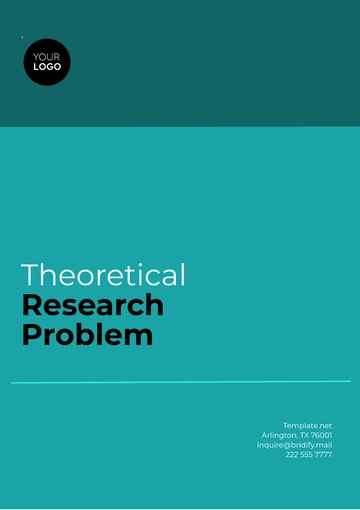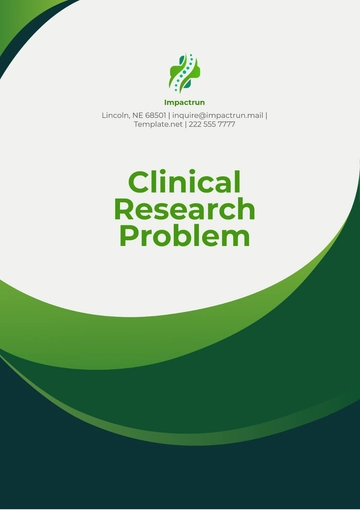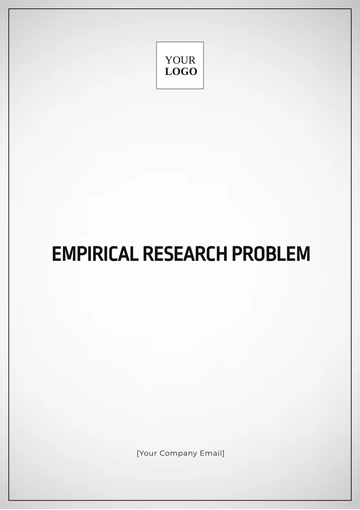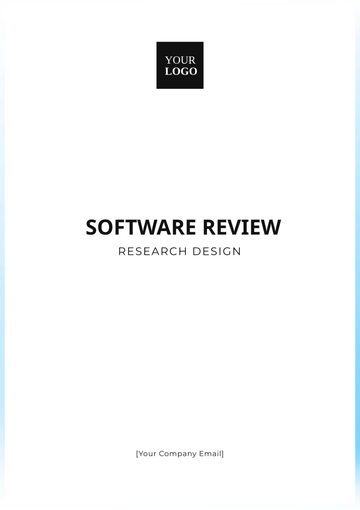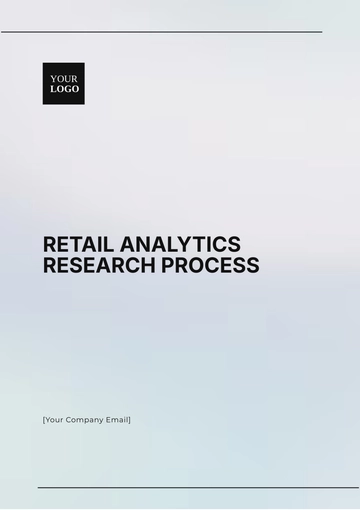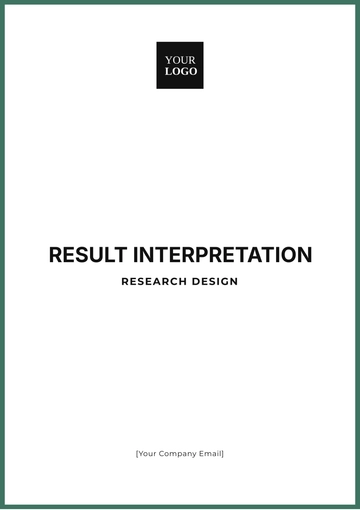Advertising Reach Descriptive Research
Prepared By: [Your Name]
1. Introduction
The purpose of this research is to evaluate the extent and effectiveness of our recent advertising campaign conducted by [Your Company Name]. This includes assessing how well the campaign reached its intended audience, the level of engagement it generated, and the overall impact on brand visibility and consumer behavior. The findings will help us understand the success of the campaign and provide insights for future advertising strategies.
2. Methodology
2.1 Data Collection
To ensure a comprehensive analysis, data was gathered from multiple sources:
Surveys: We conducted online surveys with a sample size of 5,000 respondents from our target demographic. The survey included questions on ad recall, perceived relevance, and engagement levels.
Digital Analytics: We used tools such as Google Analytics, Facebook Insights, and Twitter Analytics to track ad performance metrics including impressions, clicks, and conversions.
Sales Data: We analyzed sales data from the period before, during, and after the campaign to identify any correlations with advertising efforts.
2.2 Analysis Techniques
The data was analyzed using the following methods:
Descriptive Statistics: We used measures such as mean, median, and standard deviation to summarize key metrics such as reach and engagement rates.
Comparative Analysis: We compared the performance of different advertising channels and audience segments to identify which were most effective.
Trend Analysis: We examined changes in engagement and reach over time to identify patterns and assess the impact of the campaign.
3. Findings
3.1 Audience Reach
The campaign achieved a total reach of approximately 1.2 million individuals across various platforms, including digital, social media, and traditional media.
(a) Demographic Breakdown
Age Groups: The campaign was most effective in reaching individuals aged 25-34, who represented 45% of the total reach. This was followed by the 35-44 age group, which accounted for 30% of the audience.
Gender: The campaign successfully reached a balanced audience with 52% females and 48% males, indicating a fairly even distribution between genders.
(b) Geographic Distribution
Urban Areas: The campaign's reach was notably higher in major urban centers, such as New York, Los Angeles, and Chicago. These cities saw the most significant engagement, reflecting the campaign's effectiveness in densely populated areas.
Rural Areas: In contrast, the campaign's reach in rural areas was lower. Engagement rates in these regions were 30% lower compared to those in urban areas, suggesting that the campaign was less effective in reaching audiences outside major cities.
3.2 Engagement Metrics
The advertising campaign demonstrated strong engagement across various channels, reflecting its effectiveness in capturing audience interest.
(a) Click-Through Rate (CTR)
The digital ads achieved an average Click-Through Rate (CTR) of 3.5%. This figure exceeds the industry benchmark by 0.5%, indicating that the ads were well-received and prompted a higher-than-average response from viewers.
(b) Social Media Engagement
On social media, the campaign generated substantial interaction:
Metric | Details |
|---|
Likes | 25,000 likes on Facebook |
Shares | 15,000 shares across various social media platforms |
Comments | 10,000 comments (with a significant portion being positive) |
(c) Survey Results
Survey Metric | Details |
|---|
Ad Recall | 70% of respondents recalled seeing the ad |
Perceived Relevance | 65% of respondents felt the ad was relevant to their interests |
Overall Satisfaction | 60% of respondents reported a positive impression of the ad |
3.3 Campaign Performance by Channel
The performance of the advertising campaign varied across different channels. The following tables provide detailed metrics for digital ads and social media ads, highlighting the effectiveness and reach of each channel.
(a) Digital Ads
Metric | Details |
|---|
Impressions | 800,000 |
Clicks | 28,000 |
Conversion Rate | 4% |
(b) Social Media Ads
Metric | Details |
|---|
Impressions | 300,000 |
Interactions | 50,000 (likes, shares, comments) |
(c) Traditional Media Ads:
TV: Reached 500,000 viewers with an average of 3 minutes of engagement per viewer.
Print: 200,000 copies distributed, with an estimated 5% engagement rate.
4. Analysis
4.1 Effectiveness of Advertising Channels
Digital Ads: Demonstrated the highest engagement rates and conversions, proving to be the most effective channel in reaching and influencing the audience.
Social Media: Played a crucial role in driving interactions and enhancing brand visibility, although it had lower direct conversion rates compared to digital ads.
Traditional Media: Contributed to overall brand awareness and reach but showed lower engagement compared to digital and social media channels.
4.2 Audience Segmentation
Target Audience: The campaign was highly effective in reaching the 25-34 age group but less effective with older demographics.
Engagement Levels: Higher engagement was observed among users who interacted with both digital and social media ads, suggesting a multi-channel approach could be beneficial.
5. Conclusions
The advertising campaign successfully achieved high reach and engagement through digital and social media channels. However, there is potential for improvement in targeting older demographics and optimizing traditional media efforts. The campaign’s success in reaching the target demographic highlights the effectiveness of our current strategy but also indicates areas where adjustments could enhance overall performance.
6. Recommendations
Expand Targeting: Revise targeting strategies to better reach and engage older age groups.
Optimize Channels: Increase investment in high-performing digital and social media channels to maximize ROI.
Enhance Traditional Media: Explore new approaches or integrations with digital campaigns to boost the effectiveness of traditional media ads.
Ongoing Monitoring: Implement continuous monitoring and adjustments based on real-time data to refine advertising strategies and improve outcomes.
Research Templates @ Template.net



